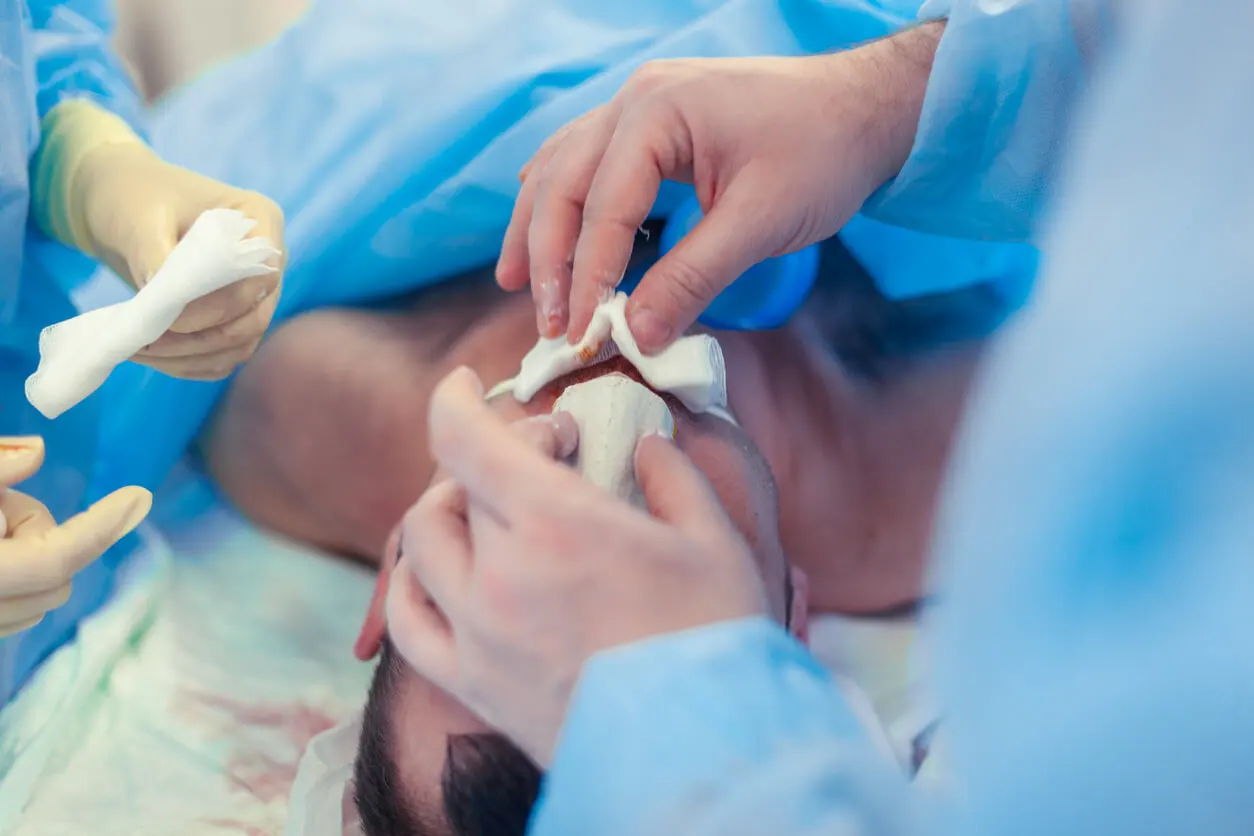Advantages of Ultrasonic Rhinoplasty Over Other Techniques


Written and verified by the doctor Leonardo Biolatto
Many people think about having a nose job, but don’t know which technique they want or are scared that traditional rhinoplasty may give bad results.
Because of this, knowing about the advantages of ultrasonic rhinoplasty is a great idea. This type of intervention is highly recommended because it’s more precise and produces less disability compared to other invasive techniques.
Essentially, in these procedures, surgeons use ultrasound to achieve more precise and less aggressive interventions. This also reduces the recovery time and pain caused by the surgery.
If you wish to have this type of aesthetic operation, it’s vital that you go to a certified rhinoplasty clinic, in order to have the attention of trained personnel to perform it.
What is ultrasonic rhinoplasty?
It’s an innovative technique that was created as an alternative to the traditional nose osteotomy. It differs from other techniques in the adjustment of the nasal bones, because it’s performed in a more precise and predictable way (using ultrasound). This means shorter operations that generate give very good results in patients.
Doctors can perform an ultrasonic rhinoplasty in a shorter period of time than other modalities. This procedure requires no more than 90 minutes. After performing an evaluation of the nasal area, doctors apply local anesthesia to the patient’s face and then make an incision in the nose.
From there, they dissect the abnormal tissue from the inside out, eventually revealing new cartilage growth points where scar tissue tends to accumulate.
They then use an ultrasound device to modify these growth points into aesthetically pleasing conical shapes, which improve facial features and overall appearance.
Many patients prefer ultrasonic techniques, as they produce better results than other alternatives (such as traditional rhinoplasty or rhinomodeling).
Due to the high frequency of ultrasound, cartilage and bone irregularities can be eliminated. This not only corrects a deviated nasal septum, but also reduces the size of the nasal cavity without the need for a long postoperative period.
Read more: What to do when nose bleeds
What advantages does ultrasonic rhinoplasty have over other techniques?

Ultrasonic rhinoplasty is the most advanced technique and uses high-frequency sound waves to modify the nasal structure. This procedure is generally used to correct deviated or malformed noses.
Surgical modification of the nose with ultrasound produces minimal scarring and is less painful than traditional rhinoplasty. In fact, most patients require only seven to ten days of postoperative recovery.
It’s also less invasive than other techniques and has fewer side effects. In these surgeries, a high-precision ultrasonic scalpel is used to avoid damage to the cartilage and soft tissue surrounding the bone, as well as the discomfort of postoperative hematomas, which make it impossible to resume daily life too quickly.
These are some advantages of ultrasonic rhinoplasty over other techniques.
1. It’s less painful than a traditional rhinoplasty

Traditional rhinoplasty consists of making a cut in the nose to modify the cartilage and bones and thus reshape its appearance. This is accomplished with the aid of tools such as a chisel and hammer.
This is a complicated process and can cause disfigurement and serious complications. Therefore, patients need to remain in bed for several days after the procedure to recover.
The ultrasonic technique only requires a small cut between the nostrils. It then uses sound waves to push the tissue without damaging the organs.
Many patients choose to undergo ultrasound nose surgery instead of traditional rhinoplasty because it’s safer and less invasive. In addition, they can return to their normal activities much faster.
2. Achieves more aesthetic results than rhinomodeling
Rhinomodeling is used to improve the aesthetics of the nose using substances such as hyaluronic acid. It’s one of the least invasive techniques, but not all patients are candidates.
This is because, in this procedure, the size of the nose can’t be changed, but only harmonized with the help of injectables.
However, in ultrasonic rhinoplasty, the size of the nose is modified. In addition, like rhinoplasty, the procedure is also very fast and doesn’t require large cuts.
Doctors apply local anesthesia and can adjust the most sensitive settings so that minimal trauma occurs during surgery. This helps mitigate pain and swelling.
3. It uses the most advanced technology
The piezoelectric scalpel is a very important resource to understand the importance of ultrasonic rhinoplasty compared to traditional techniques. This tool uses ultrasound for bone cutting with high precision and selectivity, and it performs its function without damaging the tissue or adjacent areas.
Surgeons even use a gel to fill cracks in the nasal area after ultrasonic rhinoplasty. This produces more refined and aesthetically pleasing results than more invasive techniques, such as traditional rhinoplasty.
Read more: Why society need to eliminate the stigma of plastic surgery
Ultrasonic rhinoplasty is a very reliable option
The use of ultrasound for rhinoplasty has many advantages because it’s safer, less invasive and less painful than traditional methods and doesn’t leave scars.
However, this technique also has some disadvantages, as not all physicians are trained to use this technology. In addition, there’s the risk of possible injury during surgery.
Nevertheless, most patients report favorable results when undergoing this type of procedure. So, ultimately, you will need to do your own research before choosing between traditional or ultrasonic nose jobs.
Always remember to put yourself in the hands of experts to take care of your health and integrity.
All cited sources were thoroughly reviewed by our team to ensure their quality, reliability, currency, and validity. The bibliography of this article was considered reliable and of academic or scientific accuracy.
- Barrera J. (2022). Application of Ultrasonic Piezoelectric Technology for Rhinoplasty.Facial Plastic Surgery & Aesthetic Medicine. 2022; 165-167. Recuperado de: http://doi.org/10.1089/fpsam.2022.0029
- Halepas S, Lee KC, Castiglione C, Ferneini EM. (2020). Grafting in Modern Rhinoplasty. Oral Maxillofac Surg Clin North Am. 2021 Feb;33(1):61-69. doi: 10.1016/j.coms.2020.09.003. Epub 2020 Nov 3. PMID: 33153889. Recuperado de: https://pubmed.ncbi.nlm.nih.gov/33153889/
- Pribitkin EA, Lavasani LS, Shindle C, Greywoode JD. (2010). Sonic rhinoplasty: sculpting the nasal dorsum with the ultrasonic bone aspirator. Laryngoscope. 2010 Aug;120(8):1504-7. doi: 10.1002/lary.20980. PMID: 20564664. Recuperado de: https://pubmed.ncbi.nlm.nih.gov/20564664/
This text is provided for informational purposes only and does not replace consultation with a professional. If in doubt, consult your specialist.








